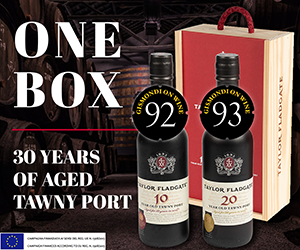"In New Zealand's wine regions, budburst occurred at the normal time between September and October. The burst was even due to good carbohydrate reserves from the last vintage and warmer than usual spring weather.
Flowering of chardonnay and pinot noir occurred in ideal conditions increasing the crop potential at harvest significantly. Sauvignon blanc and merlot flowering happened later when it was a little cooler. This led to some berry abortion, a natural thinning.
During October and November, spring and early summer rains coincided with cell division and cell elongation in most varieties, resulting in high potential berry weight, and therefore bunch weight. December and January were warmer than average and advanced the crop considerably.
February arrived and summer had departed! New Zealand recorded one of the coolest Februaries on record, which bought a halt to the ripening process. This coupled with retention of malic acid, which is normally respired by the berry on warm nights, led to a later and more compressed vintage than usual. This is advantageous to areas like Gisborne, which normally require acid addition to chardonnay, but can be complicating in areas like Marlborough as it normally has good levels of natural acidity.
At present, Gisborne chardonnay has been harvested and is showing layers of tropical fruit and intensity rarely seen. In my assessment of quality thus far, I have found that it is as good a vintage as we have had from this region.
The Hawkes Bay chardonnay is impressive with its weight and concentration. Merlot has been harvested in ideal condition and shows great colour and fruit intensity. The wine is due to be pressed off this week, and there is excitement in the winery already as to the quality of these wines.
Marlborough harvest has nearly finished, with chardonnay and pinot noir being harvested first. The chardonnays are strongly varietal and now have finished primary fermentation, awaiting malolactic fermentation. Pinot noir has also finished primary fermentation and has been pressed off, with the best parcels racked into French oak for malolactic fermentation.
Early indications look promising with good natural sugars, colour and aromatics. Pinot gris and riesling were harvested last week and look extremely good early in fermentation. The sauvignon blanc harvest has finished with good volumes of high quality juice. A warm March and dry April allowed the vine to naturally reduce acid levels, through respiration of malic acid, to manageable levels in the winery.
I can confidently say that New Zealand is on track for our largest harvest ever, and early indications predict that this is one of the more consistent vintages for the Gisborne, Hawkes Bay and Marlborough regions. There is great varietal intensity amongst all varieties. There is a great natural acid balance in all juices and good levels of palate weight as well.
Overall, in my 15+ years of winemaking here in New Zealand, I have never encountered a vintage with the varietal strength of 2004. I believe it will be a watershed year for New Zealand as it is the first year we have had good volumes of high quality wine to supply our expanding world markets."

 quicksearch
quicksearch






